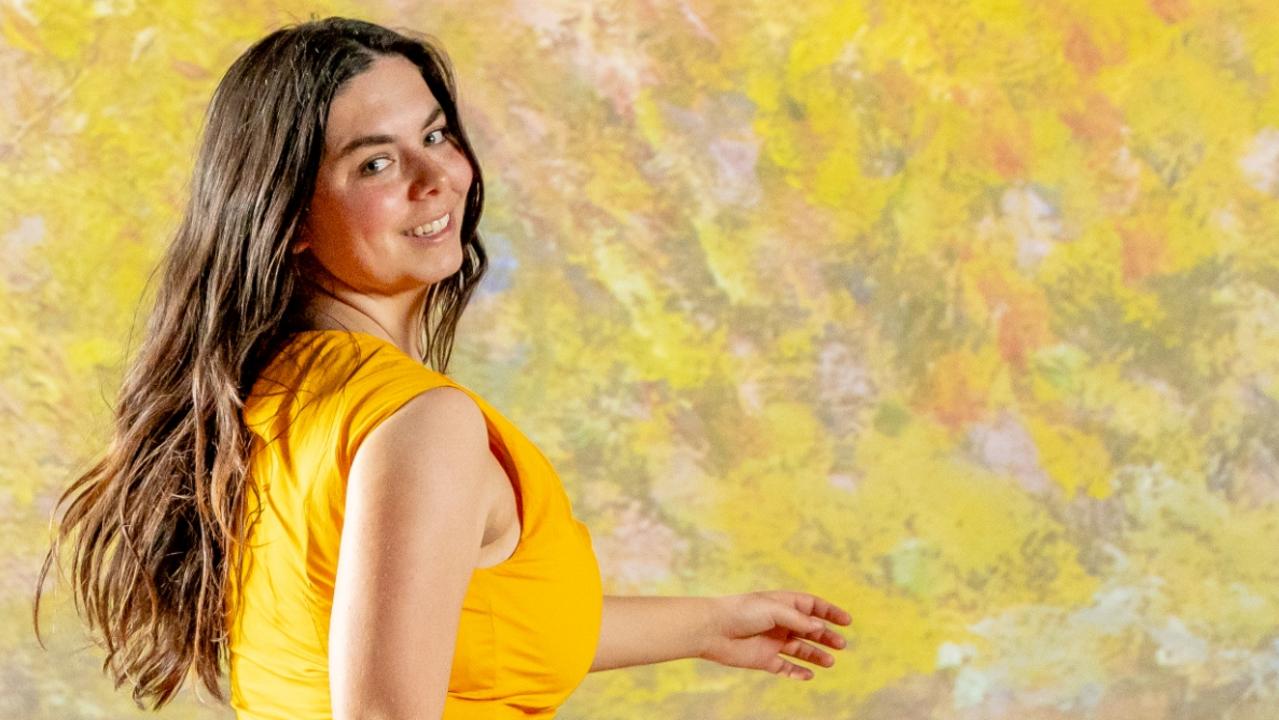Pablo Picasso’s most ‘powerful’ works coming to the NGV in Melbourne
More than 80 masterpieces by the artist once considered “the most famous man on Earth” will soon be on show in Melbourne. The curator has revealed the works not to miss.
Arts
Don't miss out on the headlines from Arts. Followed categories will be added to My News.
He is an artistic icon and influential genius. But Diana Widmaier-Picasso considers a simpler image of her famous grandfather Pablo Picasso.
“It’s important to show the human behind the artist who created such profound acts of magic,” Widmaier-Picasso, an art historian, told V Weekend. “There is a human being behind the genius.”
Her favourite stories involve her mother, Maya Widmaier-Picasso, being taught to sketch by Pablo. “Those sketchbooks show a rare and intimate side, a father teaching his daughter how to draw,” she says.
“He’s showing her the art of perspective, light and shadow, and colour.”


It’s a beautiful moment, she says, not because the mentor was Pablo Picasso, but rather, he didn’t care for the fuss surrounding his work.
“He is still relevant, and we are still interrogating his work,” Widmaier-Picasso says.
“But his genius was simple. He had a deep comprehension of the world and humanity.”
Picasso’s work and artistic journey will be celebrated in The Picasso Century, a world premiere exhibition opening at Melbourne’s NGV International on June 10.
The exhibition, developed by the Centre Pompidou and the Musee National Picasso Paris, features 80 works by Picasso, alongside 100 works by 50 of his contemporaries, including Georges Braque, Salvador Dali and Henri Matisse.
Didier Ottinger, deputy director at the Centre Pompidou, curated the exhibition for the NGV.
The Picasso Century examines the artist’s influences, encounters and relationships that steered his distinct artistic periods, including the Blue Period (1901-1904), Rose Period (1904-1906), Primitivism (1907-1909), Cubism (1909-1919), Neoclassicism and Surrealism (1919-1929).
RELATED: NGV announces major Picasso exhibition blockbuster in Melbourne
Bar Lourinha pop-up announced for NGV exhibition The Picasso Century

“The idea for this exhibition came 10 years ago,” Ottinger says.
“To secure these works, you have to fix a list a long, long time in advance. That’s the only way to be able to gather such important pieces.”
Ottinger says the exhibition will “tell the story of the 20th century through the eyes, and through the genius, of Picasso.”
Asked about his selection process for the works that have travelled from Paris to Melbourne, he answers: “I give it the same consideration for any works of the 20th century; I prefer the best, I prefer the powerful works”.
Picasso, a painter, sculptor, printmaker, and ceramist moved from his native Spain to France in 1900, where he worked and stayed until his passing in 1973.
Ottinger says Picasso, a gifted and prolific artist from an early age, moved to Paris for its creativity. Soon after his arrival in Montmartre, the bohemian heart of the city, Picasso caught the attention of art dealers and quickly found a market for his work.
“He was catching, he was feeding his art with his surroundings, every time,” Ottinger says. “Sometimes he reacted, sometimes he absorbed, but he was always connected.”
But his radical shifts in style spoke to the fearless and inventive Picasso’s determination to do things his way.
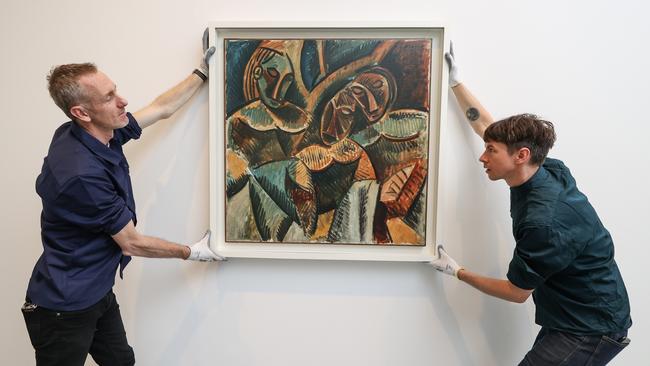
“He said his paintings were not made to please the collectors,” Ottinger says. “He used to say, ‘A painting is a weapon.’ He used it against the world, against the taste of collectors. This man was always fighting.”
With each change, Picasso also battled public perceptions.
“When you consider the great artists, there is usually a subtle evolution,” Ottinger says. “This is not the case with Picasso. He chose a type of expression, and would go deep into this expression, then delete it, and change to something quite the opposite.”
The most spectacular example of Picasso’s ability to switch was his move from cubism, which he co-invented, to neoclassicism. The change was inspired by a trip to Rome where he met and fell in love with a ballerina, who became his first wife.
“It was (initially) difficult when he made cubism because nobody knew what it was about,” Ottinger says. “But he had many followers and it became an important movement. Then he became classical, and it was a shock. But again, people were following and saying, ‘OK’. Then he became surrealist, and then something else until the very end.”
Picasso’s ability to adapt and absorb caused ire among his peers, mainly because they saw him as a very talented threat.
“It’s a drama to have a man like Picasso (around). He was so gifted,” Ottinger says. “If you were an artist at that time, and you had an idea, and the idea was expressed in an exhibition or studio, Picasso would see it, catch it and make it better. It was very upsetting.”
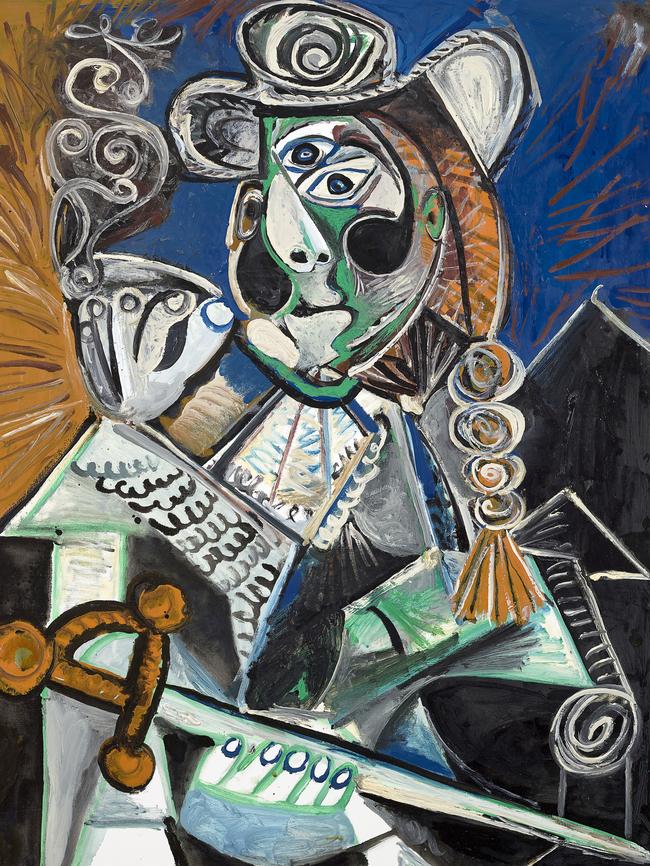
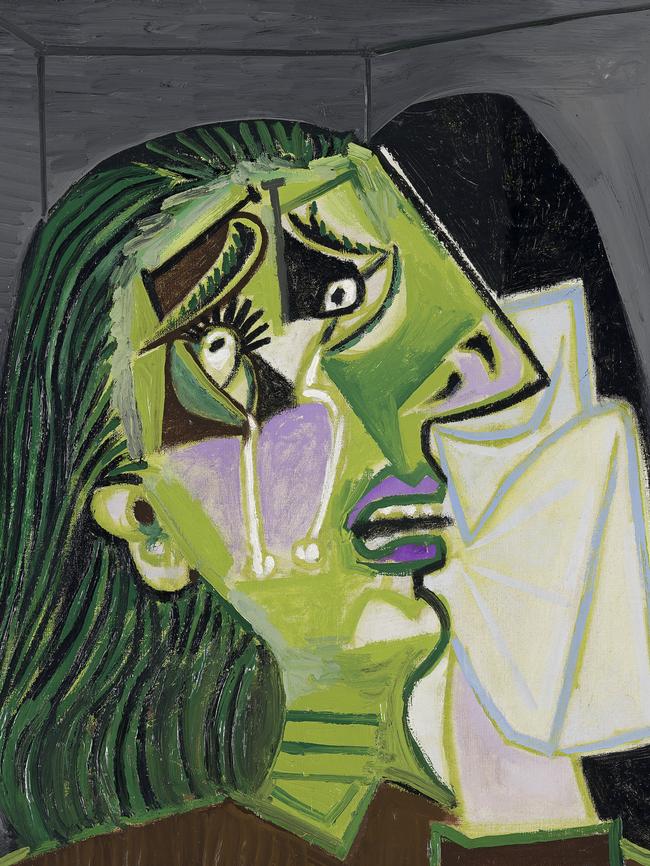
In his final years, and at the absolute height of his fame, Picasso was misunderstood and unpopular.
“It was a very paradoxical moment for him because he was the most famous man on Earth,” Ottinger says. “He used to say he was as famous as Albert Einstein and Marilyn Monroe, but his art was not considered important. He was a man from the old world.”
Yet, by his disruptive nature, Picasso was on trend by being off trend. As the art world turned to New York and abstract expression, Picasso went back to figurative painting.
“It’s probably his most interesting work,” Ottinger says. “He was not understood at all. He was 80 years old, and completely out of fashion. To the art word, he didn’t exist.”
Ottinger arrived in Melbourne earlier this week to prepare for the exhibition opening. He says the task of shipping priceless Picasso works to Australia has been monumental.
The essential works that will go on display include The Weeping Woman (1937), Mother and Child (1907), The Matador (1970), The Violin (1914), and many more.
“The works are so important in terms of value,” Ottinger says, with obvious understatement. “We had to fracture the shipment.”
The paintings were flown to Melbourne in eight different planes, presumably to avoid a fine art catastrophe, with each plane including high security.

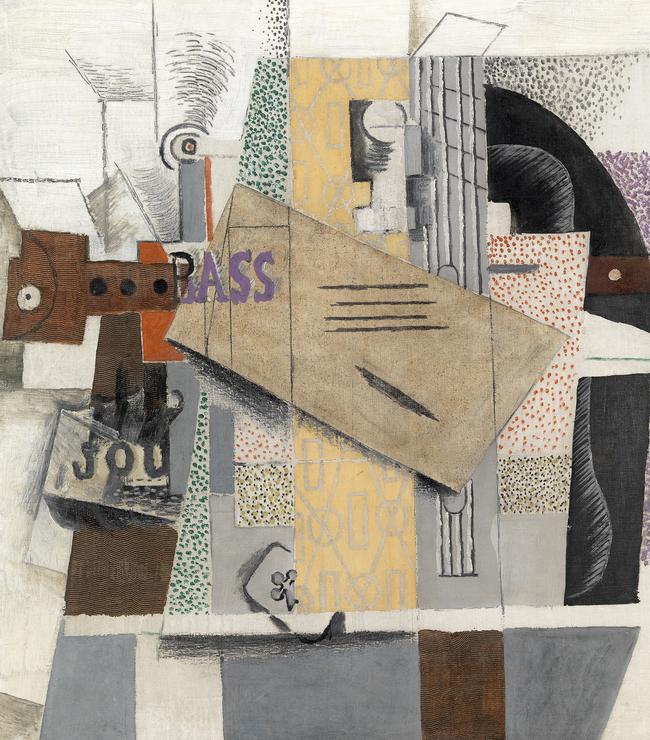
Ottinger doesn’t hesitate when asked to choose the most significant work in the exhibition. He nominates two.
First, The Matador from Picasso’s series of large canvases depicting sword-brandishing musketeers, for its free thinking and humour.
His second pick is The Weeping Woman, which was acquired by the NGV in 1985 and famously stolen from the gallery walls in August 1986 by a group calling itself the Australian Cultural Terrorists.
Initially, the bandits demanded a ransom, but quickly turned the heist into a dialogue about arts funding, and a platform to hurl insults at the-then Victorian Arts Minister Race Mathews.
Two weeks later, after a tip off to police, The Weeping Woman was found undamaged in a locker at Spencer St railway station.
The crime was not solved, but investigators suspected it was an “inside job” involving culprits from the art world.
“A work can become a masterpiece in such a story you have with The Weeping Woman,” Ottinger says. “It was stolen, it came back, and now it’s an important painting to everyone because of this story.”
Diana Widmaier-Picasso hopes audiences see the humanity in Picasso’s work.
“He understood life and death, and he was affected and influenced by these crucial moments,” she says.
She knows the weight of expectation that comes with her family name.
“There is a great responsibility that comes with the name Picasso.
“People are still fascinated by, and devote their lives to Pablo Picasso.
“The blessings are, he had so many admirers,” she says, then adds quickly: “I don’t see any curses. There are no downsides”.
Picasso’s must-see works at the NGV
The Matador (1970)
The Weeping Woman (1937)
Mother and Child (1907)
The Violin (1914)
Source: Didier Ottinger
The noble art of homage
Almost 50 years after Pablo Picasso’s death, artists continue to be inspired by his creations, the movements he spearheaded, and the way he worked.
Three Australian artists – sculptor Sanné Mestrom, painter Kirsty Budge, and set designer and photographer Georgina Cue – have shared with V Weekend how the Spanish master has influenced their works and careers.
Sanné Mestrom
Sanné Mestrom has created a series of sculptures inspired by Pablo Picasso’s Weeping Woman paintings – but her homages are “not without critique”.
“It’s a double-edged sword, my love of Picasso,” the Blue Mountains-based conceptual sculptor says.
“While he was progressive in some areas, he was not progressive in his representation of women.
“He would often depict his mistress, Dora Maar, crying and in anguish. I wanted to pull her out of the canvas.”
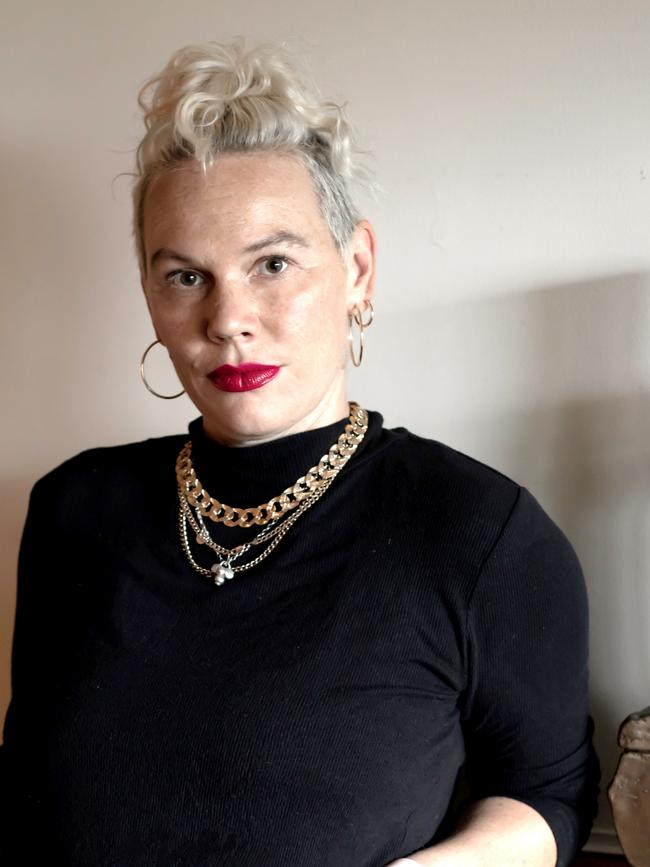
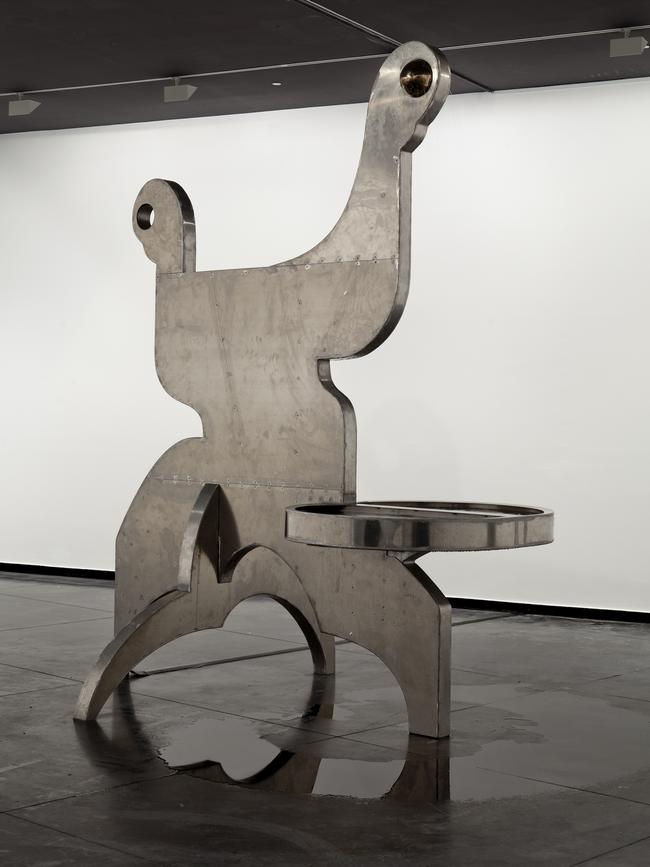
Mestrom’s breakout 2013 work titled Dora Maar achieves this – Maar, who was also an artist, towers as a 3.5m-tall aluminium water fountain sculpture.
Tears still spill from a large bronze eyeball in the work commissioned by the Australian Centre for Contemporary Art, but Mestrom notes Maar “is force” rather than being “compressed into a paining”.
The Netherlands-born artist, who was based in Victoria for 20 years before recently shifting north, continued her feminist revision of the Weeping Woman with three concrete sculptures titled Weeping Women the following year.
“They went further into that idea of reclaiming the female body, (and) women controlling their own space,” she says.
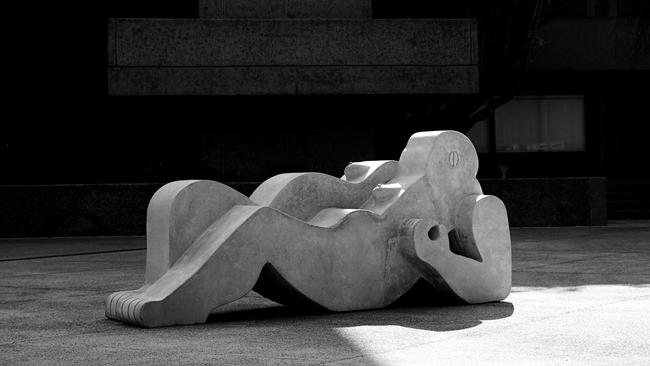
Mestrom says while her work contains criticism of Picasso, it also holds “a lot of respect”.
“It’s not by accident he’s such a household name – he really was enormously pivotal in the modernist history of art,” she says.
“He popularised the breakaway of art’s responsibility to document life – the camera was invented around the time he found his feet, (so) art didn’t have to assume that role – and paved the way for a much more experimental approach.
”Art could exist just for art’s sake, to challenge the mind and challenge our assumptions.”
Georgina Cue
Working out of her parents’ Ivanhoe garage, Georgina Cue has brought an artistic movement that was spearheaded by Pablo Picasso a century ago into the modern day.
The artist uses everyday materials to create eye-catching sets in that garage, which she then photographs and exhibits as photos.
Cue says she has drawn from “20th-century art historical and cinematic moments” since starting this body of work six years ago. And the synthetic cubist movement developed by Picasso and his contemporary, Georges Braque, informed her 2021 exhibition, Pictures.
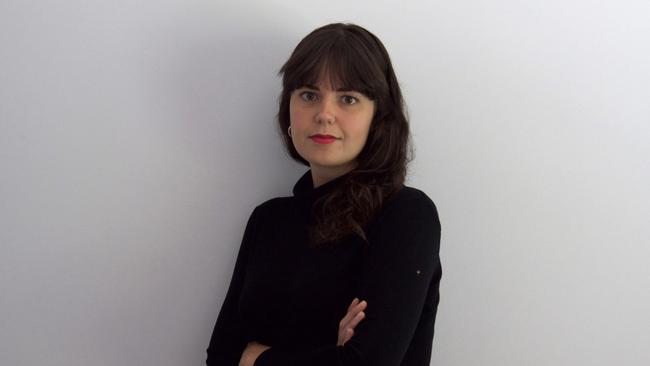
Art historians note Picasso’s Guitar series displays the transition from the first period of cubism, analytical, to the synthetic period. Cue says the latter discarded the need for three dimensions to “flatten” spaces in artworks, while also using “simple shapes and bright colours”.
Collage was also invented during this period, with Picasso and Braque both incorporating real items into works from 1912.
In her creations for Pictures – including Mandolin and Guitar, and Still Life with Yellow Vase – Cue directly references the Guitar series, uses real-life objects and bold colours, and plays “with the idea of flattening space using sculpture and photography”.
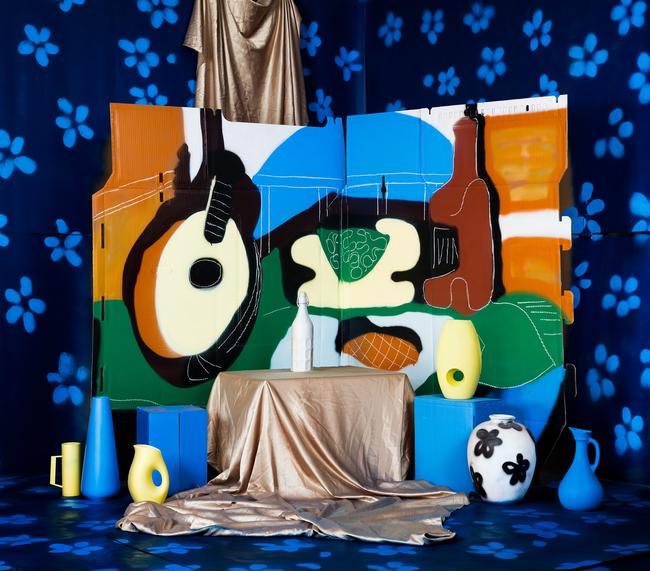
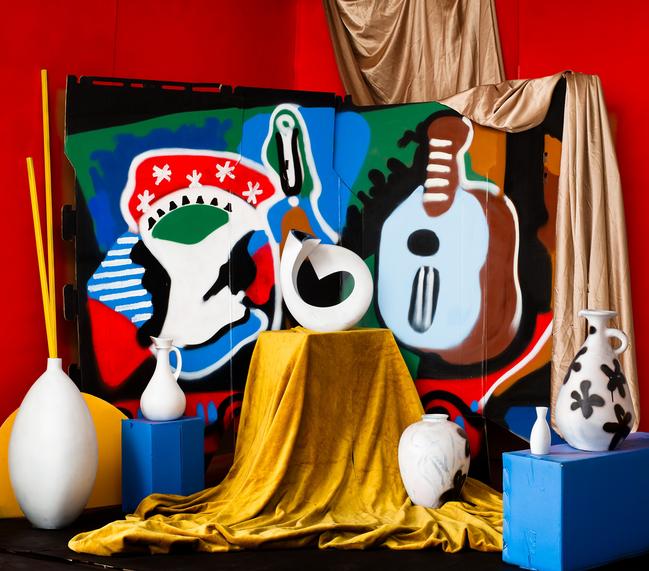
“As someone interested in 20th-century art history, and in light, colour, depth of field, set design, and interiors, … synthetic cubism is the perfect template,” Cue says.
“I’d been accruing hundreds of images of paintings by Picasso and Braque from the period between 1912-1914 and I wanted to create a series of still lifes, to push the colour I was using (and) I also really wanted to explore playing more with depths of field.”
The fact Picasso created cubist costumes and sets for the Ballets Russes appealed to Cue further “as an artist who looks asset design”.
Kirsty Budge
Abbotsford-based artist Kirsty Budge returned from a month in Europe in 2016, in which she saw all of Pablo Picasso’s “hits”, inspired to paint.
His museums in Barcelona and Paris were on Budge’s itinerary. And seeing his anti-war masterpiece, Guernica, at Madrid’s Museo Reina Sofia was the highlight, moving Budge to tears.
“I was in awe,” she says. “As a painter, (that) has had the biggest impact on me.
“He was so prolific – he’s just sprinkled everywhere.”

She continues: “It’s inspiring because (you can see) a life’s work of paintings. You see someone move through ideas, what they’re going through in their life. You also see the community he was part of.”
Budge – who won last year’s Arthur Guy Memorial Painting Prize for lockdown-inspired painting OK, so is this a fresh hell or are we just adding to the regular one today? – says lessons from this trip have since permeated her own career.
“Picasso’s work has given me the permission … to be cheeky, to challenge, to question or to explore different visual realities,” Budge says.
“Picasso’s work has taught me how to understand the process of thinking in images, tones and forms, how to deconstruct ideas and to think in a visual way, while being aware of what has come before us and thinking how we can acknowledge and expand on that.
“Picasso made the work he wanted to see. The bold freedom … has been very influential to me.”
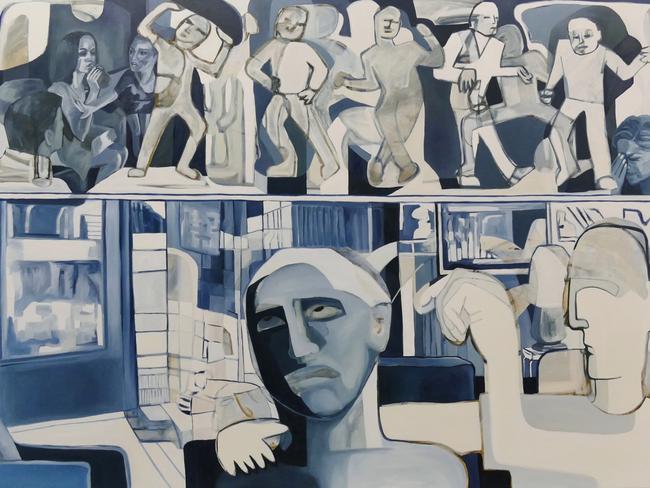
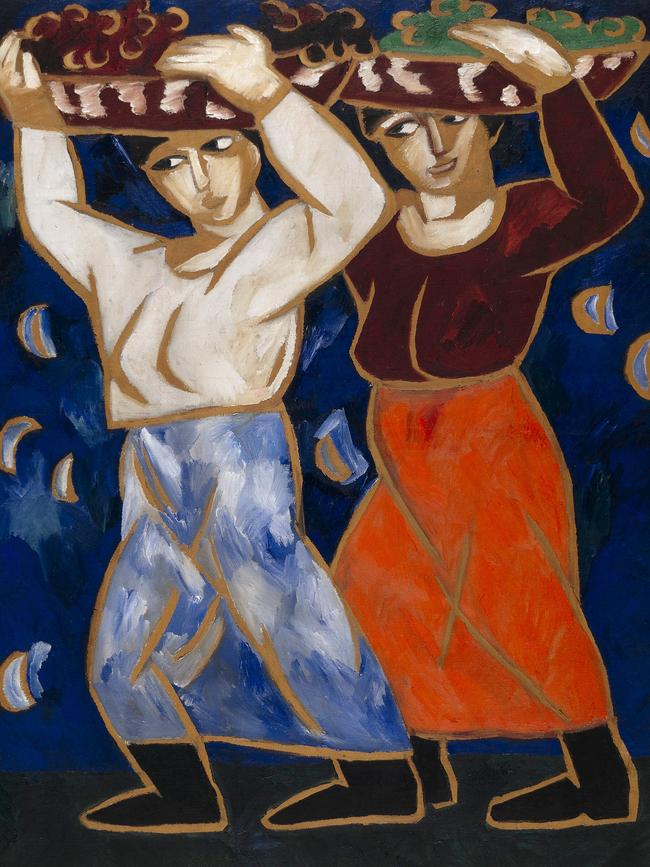
There was one clear lowlight of the trip for Budge: there weren’t enough paintings by women in the museums she visited.
“There were a few scattered here and there,” she says.
“There was one painting by a woman at (Paris’s Centre) Pompidou, by Natalia Goncharova.
“I was captivated by the work, it felt bold and soft at the same time. The impact of seeing that work for the first time still hasn’t left me.”
That painting, Les Porteuses, later directly influenced Budge’s 2017 piece OK I’m gonna need you to tone it down, I love you but you’re being a lot.


